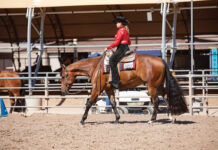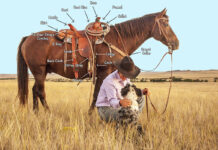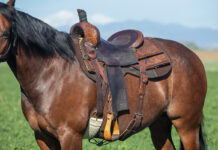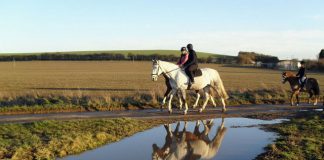Spurs can seem like a ubiquitous piece of any horseman’s gear, but they’re not always necessary—or even desirable. Certified Horsemanship Association Chief Executive Officer Christy Landwehr shares her litmus tests for incorporating spurs, with advice on proper usage.
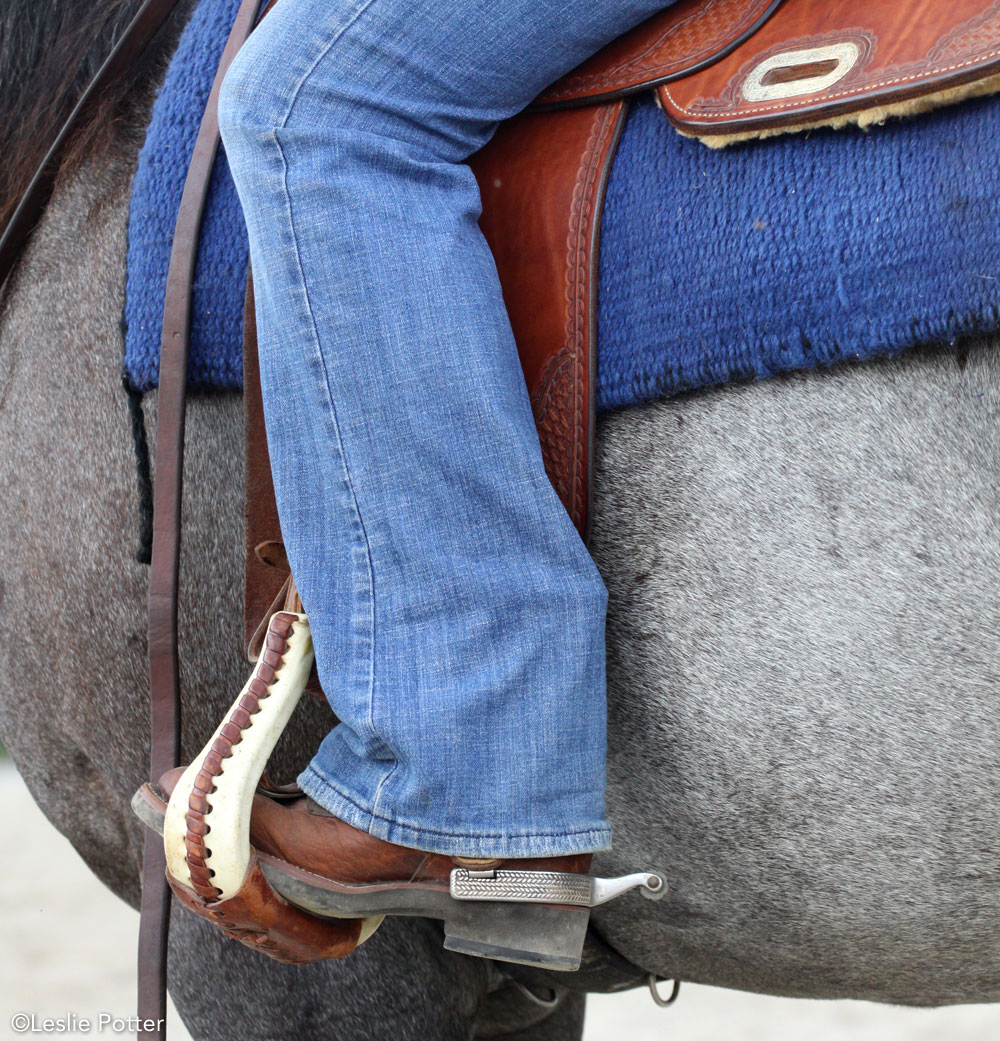
Are You a New Rider?
As a riding instructor, Christy strongly discourages inexperienced riders from using spurs.
“The lower leg of a new rider isn’t ready to use them, and they don’t have an independent seat and end up gripping with their heel and spur—this does the exact opposite of what you need to do,” says Landwehr.
Do you have an independent seat?
If you aren’t able to ride with an independent seat, you’re not ready for spurs, according to Landwehr.
You need to be able to ride at all three gaits with and without one or both stirrups, sitting, and in two-point position, all without gripping the horse with your legs for balance. Landwehr says being able to ride with just one stirrup is crucial.
“Riding with no stirrups at all can become easy over time,” she says. “But the reality is, most of the time you’re going to lose one stirrup, not both. If you automatically go to gripping and dig your spur into the horse, you’re going to hurt him and possibly yourself. But if you’ve worked a lot with one stirrup, then it will be no big deal—you can just continue on riding until you regain your stirrup without engaging the spur.”
Possessing this control means you can lightly cue the horse with your leg without engaging the spur until you mean to use it.
“An independent seat means you can control the movement of your lower leg so well that you can apply the spur very softly or add a little bit more if you need to,” says Landwehr.
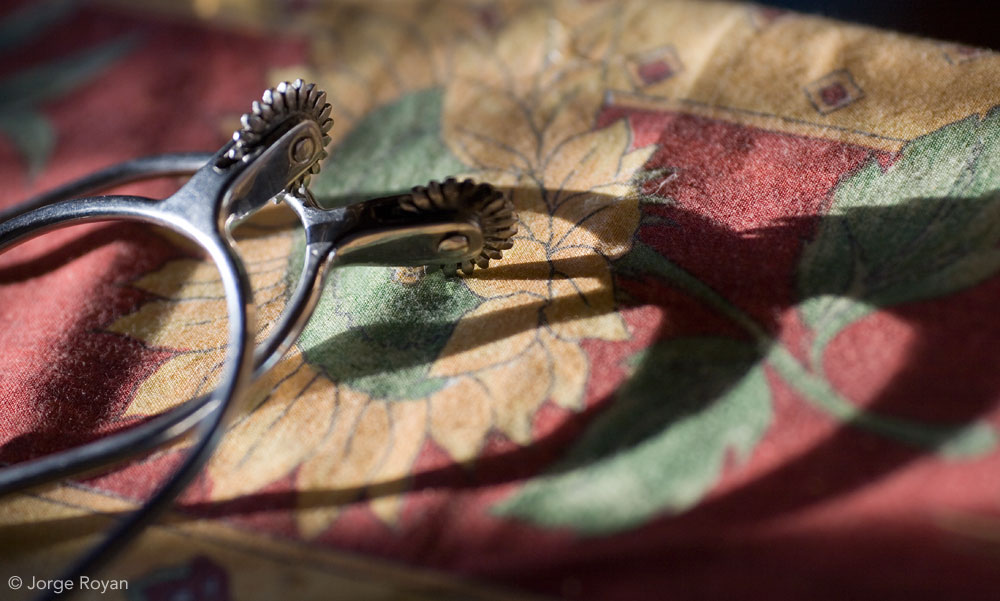
Is your horse being lazy?
What if your horse is a dead-sided school horse, or one where your strong leg cues just go ignored? These can be instances where spurs are a good idea, says Landwehr, but if your leg isn’t ready to cue the horse correctly, she advises another aid.
“In my program, if I have a lazy school horse—and lazy school horses are great—I will give the rider a crop to use on the shoulder,” she says. “Then they will progress to a dressage whip to use behind their leg, and then the very last artificial aid I will give is a spur for the advanced rider.”
She advises you to avoid reaching for spurs at the first sign of a lazy horse. Make sure you can use your legs properly before adding this artificial aid.
Are you asking for impulsion or lateral movement?
If you’re aiming for impulsion—greater energy and lengthening of stride—or lateral movement such as a sidepass or two-track, Landwehr says spurs can work well.
“A spur is truly for impulsion and lateral movement,” she says. “A spur can help in these situations.
“Spurs can sometimes help encourage elongation and fluid movement throughout the horse’s back, and get the horse underneath himself, using his hocks more,” Landwehr continues. “And for lateral movement, to get really good leg-yields and half-passes and have the horse move his haunches, spurs can be very useful. They are good to help get sideways and forward motion from your horse at the same time.”
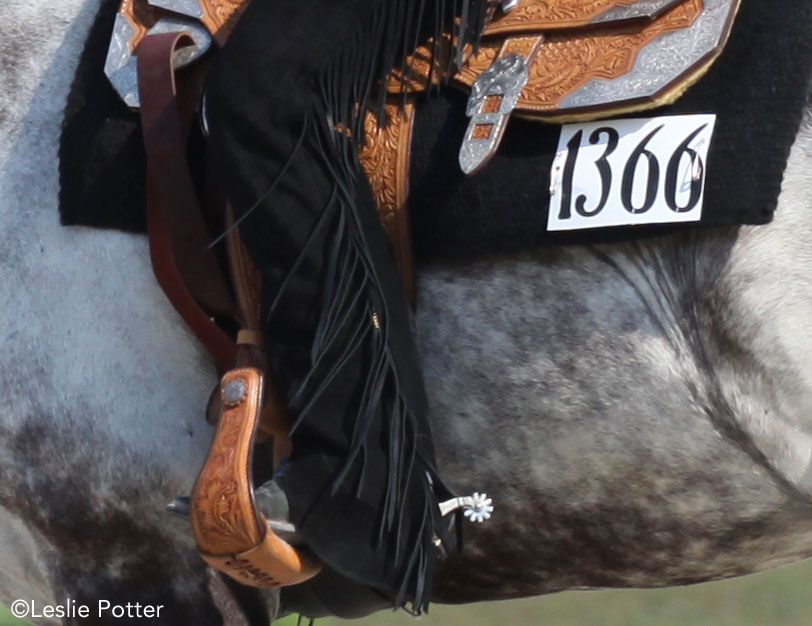
She stresses that it’s possible to attain these movements without spurs, but the rider may have to resort to very strong leg cues depending on the horse.
“I don’t necessarily agree that vigorous kicking instead of a spur with a light touch is a good idea,” says Landwehr. “That’s why sometimes using a spur is great, because it allows the horse to not get desensitized to your leg.”
Are you frustrated?
If you’re even remotely angry or frustrated, don’t reach for your spurs, says Landwehr. “There shouldn’t be spur marks or any indentation of the hair coat. There should definitely not be blood. If you see spur marks or blood, you are using them in anger, and that is definitely not the correct use of the spur.”
Using Spurs the Right Way
There’s a sequence to using spurs correctly. Christy Landwehr, chief executive officer of the Certified Horsemanship Association, says it shouldn’t be the first line of communication with your horse, but rather the very last step in cueing.
“Remember: ask, tell, command,” says Landwehr. “That’s the order with any horse for impulsion or upward transitions, really with anything. Start with the voice aid. If you don’t get the upward movement you want, you breathe in. If you don’t get upward movement with breathing in, you close your thighs. If you don’t get upward movement there, close your calves. If you still don’t get upward movement, then you use your spur. It’s a definite order of progression.”
Meet the Expert
Christy Landwehr is the chief executive officer of the Certified Horsemanship Association (CHA), the largest certified body of horseback riding instructors in North America. She is also an American Quarter Horse Association Professional Horseman and an American Paint Horse Association Professional Horseman. She is located in Aurora, Colo. For more information about CHA, visit cha.horse.
This article originally appeared in the January 2019 issue of Horse Illustrated magazine. Click here to subscribe!

